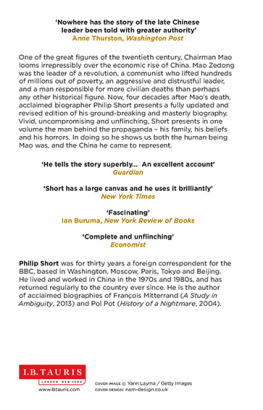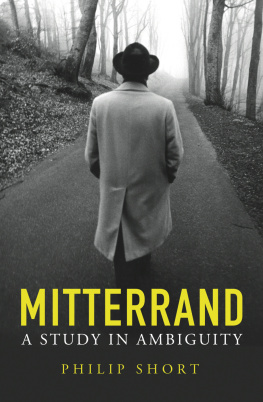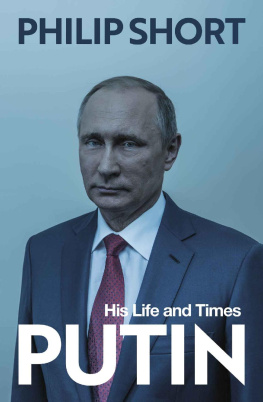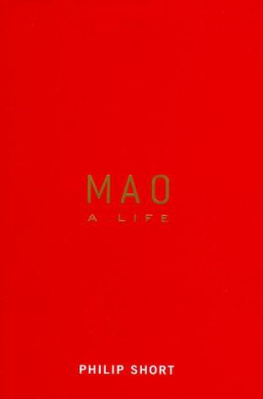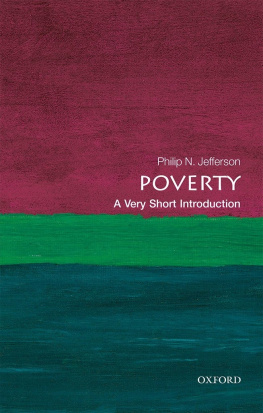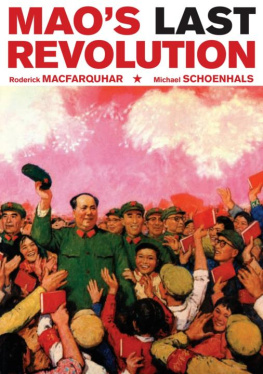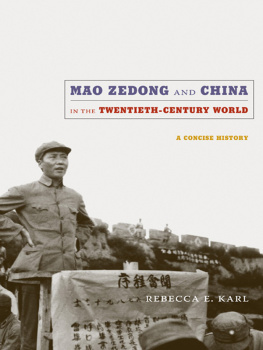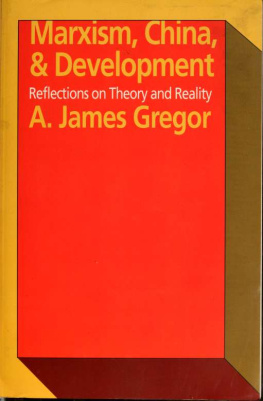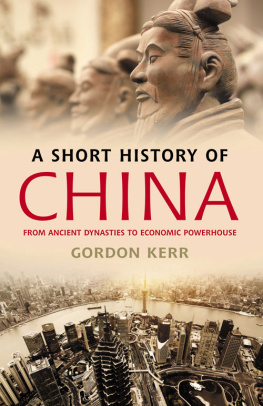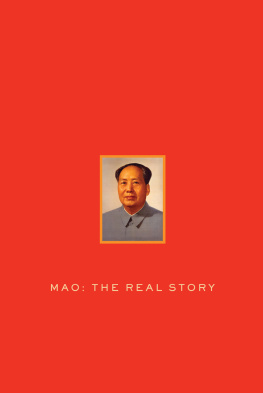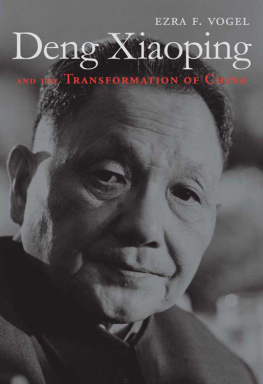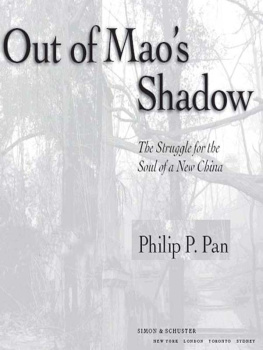
PHILIP SHORT was for thirty years a foreign correspondent for the BBC, based in Washington, Moscow, Paris, Tokyo and Beijing. He lived and worked in China in the 1970s and 1980s, and has returned regularly to the country ever since. He is the author of acclaimed biographies of Franois Mitterrand (A Study in Ambiguity, 2013) and Pol Pot (History of a Nightmare, 2004).
Beautifully written, grippingly readable A formidable piece of research
TERRY EAGLETON, INDEPENDENT
Nowhere has the story of the late Chinese leader been told with greater authority
ANNE THURSTON, WASHINGTON POST
Short has a large canvas and he uses it brilliantly
NEW YORK TIMES
He tells the story superbly An excellent account
GUARDIAN
Deserves to be the standard history. It is everything one could hope for: magisterial and rich in material
JOHN SIMPSON, BBC
A fascinating account
IAN BURUMA, NEW YORK REVIEW OF BOOKS
A ground-breaking biography
SUNDAY TIMES
Complete and unflinching
ECONOMIST

Revised edition published in 2017 by
I.B.Tauris & Co. Ltd
London New York
www.ibtauris.com
First published in Great Britain in 1999 by Hodder and Stoughton a division of Hodder Headline
Copyright 1999, 2017 Philip Short
The right of Philip Short to be identified as the author of this work has been asserted by the author in accordance with the Copyright, Designs and Patents Act 1988.
All rights reserved. Except for brief quotations in a review, this book, or any part thereof, may not be reproduced, stored in or introduced into a retrieval system, or transmitted, in any form or by any means, electronic, mechanical, photocopying, recording or otherwise, without the prior written permission of the publisher.
Every attempt has been made to gain permission for the use of the images in this book. Any omissions will be rectified in future editions.
References to websites were correct at the time of writing.
ISBN: 978 1 78453 463 9
eISBN: 978 1 78672 015 3
ePDF: 978 1 78673 015 2
A full CIP record for this book is available from the British Library
A full CIP record is available from the Library of Congress
Library of Congress Catalog Card Number: available
For Christine
Contents
Acknowledgements
A book of this kind is the cumulation of many people's goodwill. Some I am able to thank publicly here, including Zhang Yufeng, the companion of Mao's last years; Li Rui, Mao's one-time secretary and later a forceful advocate of social democracy for China, who, as these lines are written, is still fighting the good fight in his 100th year; the late Wang Ruoshui, courageous former deputy editor of the People's Daily; Pang Xianzhi, once Mao's librarian and today one of China's best-informed official historians; Zhou Enlai's niece, Zhou Bingde; Deng Xiaoping's son, Deng Pufang; and Liu Shaoqi's daughter, Liu Tingting.
Many others contributed anonymously. When the first edition of this book was published in 1999, China was already a far more tolerant and liberal country than when I had made my home there, twenty years earlier, and its people took for granted freedoms which would have been unthinkable when Mao was alive. But it had yet to reach the stage where its citizens could be quoted on-the-record on sensitive political topics without fearing the wrath of their superiors or inquiries from the police. Today, another twenty years on, there is more latitude. Despite a systematic clampdown on anything which might be construed as threatening Party rule, most educated Chinese, especially the younger generation, feel able to voice their opinions on almost any subject. For the published word, however, red lines still exist which it is better not to cross.
No one has a monopoly of wisdom about Mao. CCP officials, Party historians, Chinese academics and former members of the Chairman's household who shared with me their private insights disagreed on many key points. Sometimes I found all their views unpersuasive (as they did mine). But, together, they helped to illuminate areas of Mao's life that, until now, have remained artfully obscured, in the process demolishing much conventional mythology. To all of them I express my gratitude.
In writing the first edition of this book, I was greatly aided by Judy Polumbaum and Karen Chappell at the University of Iowa, through whose good offices I was able to spend a year in scholarly retreat in the Midwest; by my editors, Roland Philipps in London and Jack Macrae in New York; and by my agent, Jacqueline Korn, who kept the faith when others began to doubt whether it would ever be finished. Since then, a huge amount of new research has been undertaken by both Chinese and Western historians, and episodes which were still opaque when this book was originally written are now much better understood. That has provided the rationale for this new, expanded and revised second edition, which owes its existence to Tomasz Hoskins, my editor at I.B.Tauris. To him and to Sara Magness, who oversaw its production, my thanks and appreciation.
List of Maps
List of Illustrations
Photographs courtesy of Xinhua (New China News Agency) unless stated otherwise.
SECTION 1
The earliest known portrait of Mao, as a teenager around the time of the 1911 revolution.
A soldier preparing to shear off a peasants queue after the overthrow of the Manchus. Harlingue-Viollet, Paris.
One of the many forms of death by slow execution common in Maos youth. These prisoners are being slowly asphyxiated as the weight of their bodies stretches their necks. Joshua B. Powers Collection, Hoover Institution, Stanford University.
The Mao family home at Shaoshan. Marc Riboud, Magnum Photo Agency.
Mao at the age of 25, with his mother, Wen Qimei, and his brothers, Zemin, 22, and Zetan, 15, in Changsha in 1919.
Maos father, Shunsheng, 1919.
Maos close friend, Cai Hesen, who converted him to Marxism.
Mao and other members of the Hunanese delegation in Beijing, petitioning for the removal of Governor Zhang Jingyao in January 1920.
Chinas first president, Sun Yat-sen.
The spiritual fathers of the Chinese Communist Party. Left: Li Dazhao, of Beijing University, whose writings popularised Bolshevism in China. Right: Chen Duxiu, editor of New Youth and the CCPs first General Secretary.
Maos second wife, Yang Kaihui, with their sons, Anying, 3, and Anqing, 2, in 1925.
Maos third wife, He Zizhen. Courtesy of Maoping Revolutionary Museum, Jiangxi.
From left: Ren Bishi; Red Army Commander-in-Chief, Zhu De; Political Security director, Deng Fa; Xiang Ying; Mao; and Wang Jiaxiang, on the eve of the proclamation of the Chinese Soviet Republic at Ruijin in November 1931.
Generalissimo Chiang Kai-shek. Sygma, Paris.
Zhou Enlai with Mao in north Shensi in 1937. Peabody Museum of Archaeology and Ethnology, Harvard University (Owen Lattimore Foundation).
SECTION 2
Yanan in the late 1930s, with its distinctive Song dynasty pagoda. Edgar Snows China, by Lois Wheeler Snow, reprinted by permission of Random House.
Zhang Guotao, whose challenge to Mao collapsed after the destruction of the Fourth Army in Gansu in 1937.
Wang Shiwei, the gifted young writer whose persecution in the Yanan Rectification Campaign set the pattern for all Maos subsequent efforts to crush intellectual dissent. Courtesy of China Youth Press.
Next page
